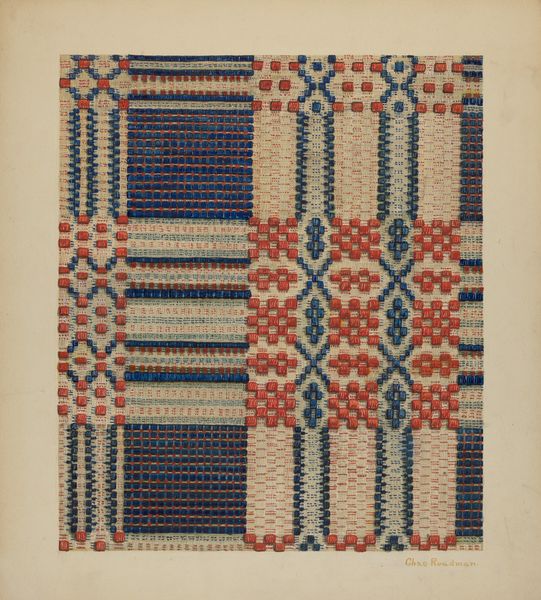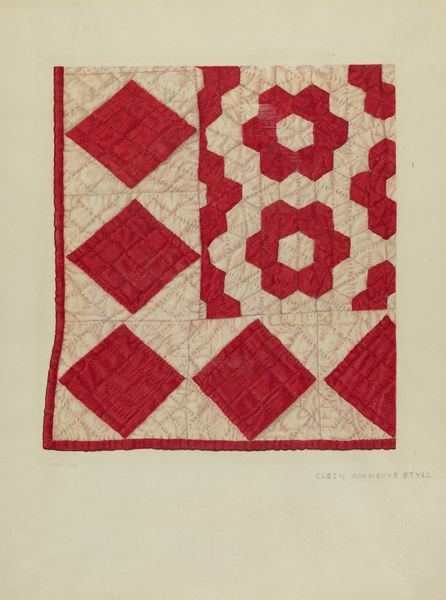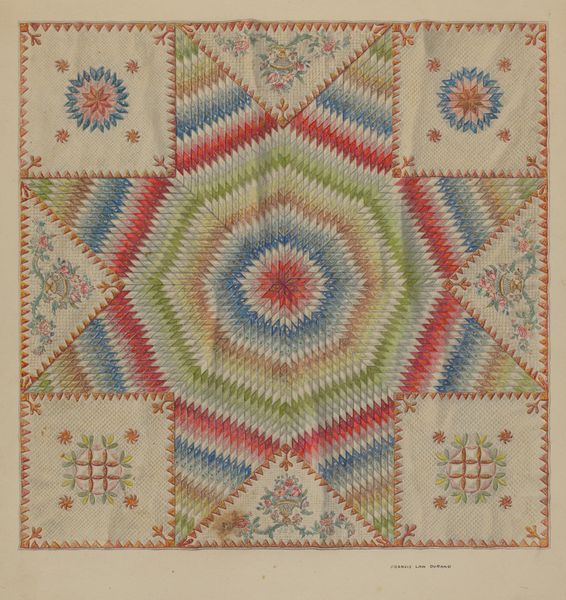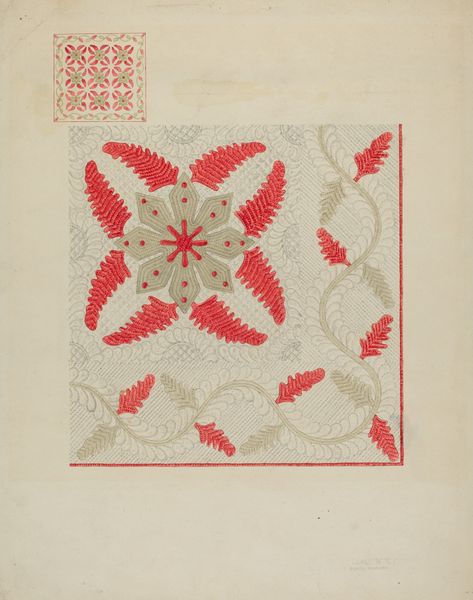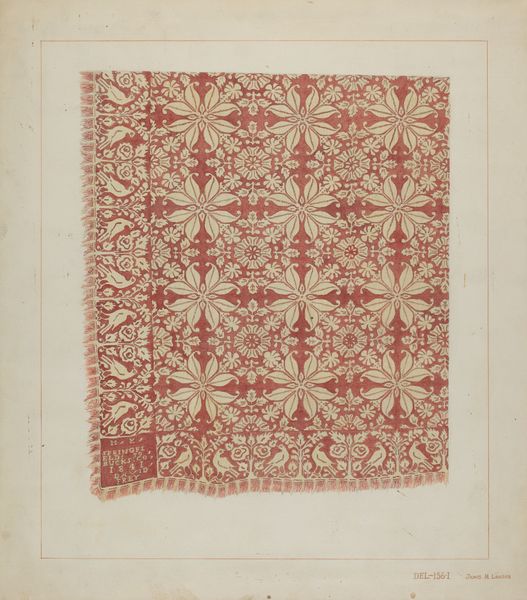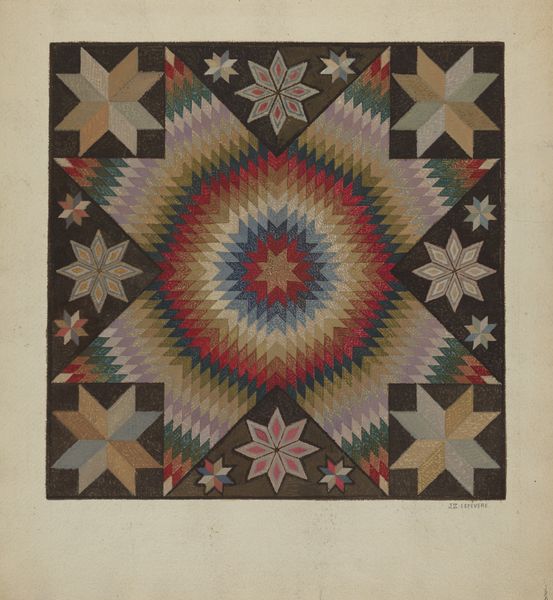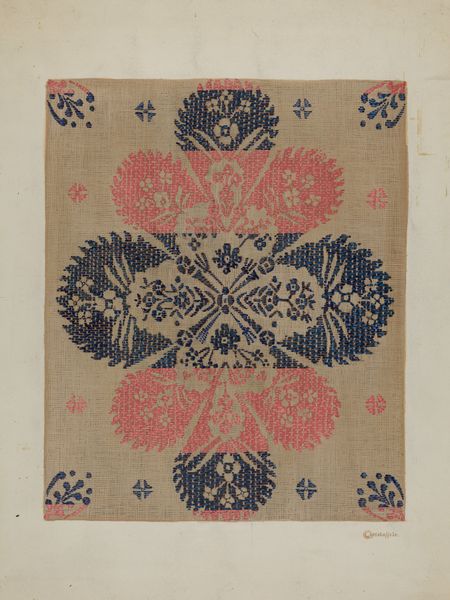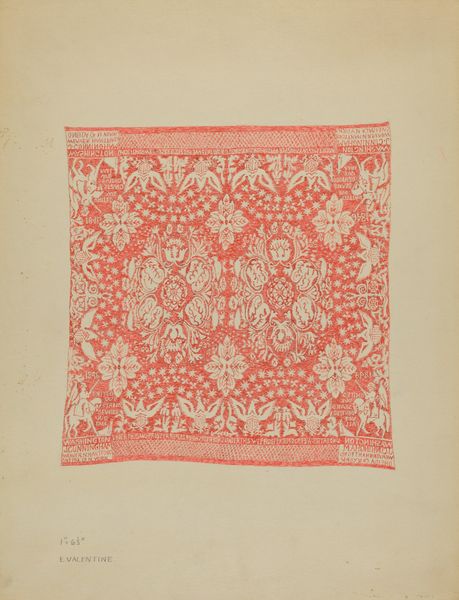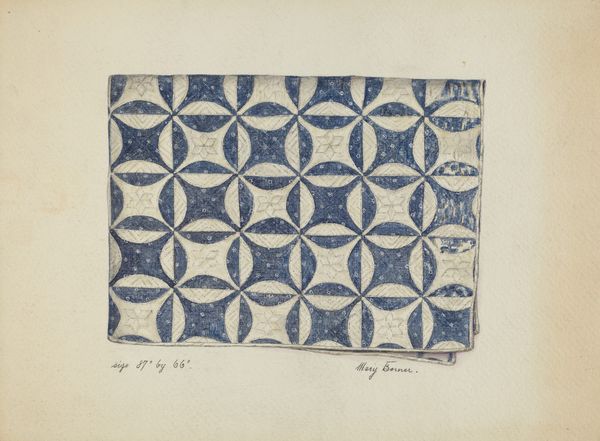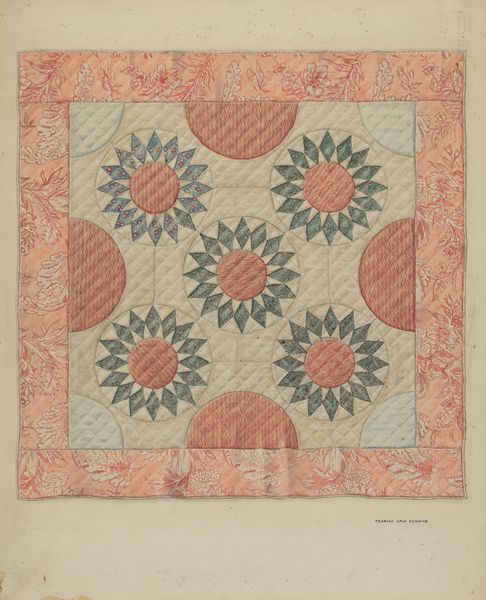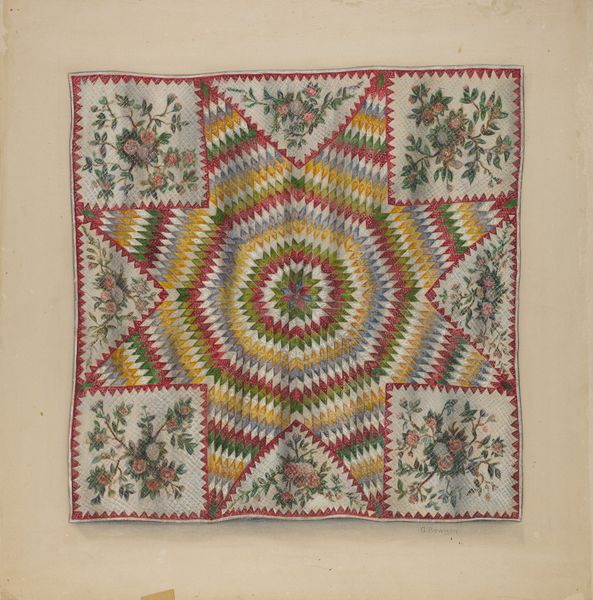
drawing, weaving, textile
#
drawing
#
pattern
#
weaving
#
textile
#
geometric
#
pattern repetition
#
textile design
#
decorative-art
#
imprinted textile
Dimensions: overall: 35.4 x 25.1 cm (13 15/16 x 9 7/8 in.)
Copyright: National Gallery of Art: CC0 1.0
Editor: This is a section of a coverlet from around 1936, by Ruth Barnes. The piece looks to be a drawing that replicates a weaving of some sort, and I'm immediately drawn to its intricate pattern. How would you interpret this work, particularly given its historical context? Curator: That's a great observation! It's easy to view it solely as decorative, but I wonder about its social implications during the 1930s. The Great Depression saw a resurgence in homespun crafts as a means of economic self-sufficiency. Do you think this coverlet section reflects that? Is it perhaps a design for mass production or more related to craft revival movements such as the Homespun Movement of the early 20th century? Editor: That’s a good question. Thinking about the drawing aspect, it does make it seem geared towards wider distribution – like a template perhaps? It almost downplays any unique imperfections that would arise from this kind of textile craft when produced by hand. Curator: Exactly. So, we might consider this beyond individual artistry. Think of it in terms of institutional impact: how might schools or settlement houses have used patterns like these to teach marketable skills? Perhaps the artist had to conform to institutional tastes? And, how does the very act of archiving or displaying textile design elevate this form of folk art? Editor: So you're saying that exhibiting it is not only a sign of value, but that the intention of the artwork is different because it also served to represent ideas that became politically significant during the Depression. Curator: Precisely. It moves beyond the merely pretty. Its preservation and display by institutions underscores the importance of craft, design, and textile traditions and acknowledges the skill involved, thus altering perceptions of its societal worth. It’s no longer ‘just’ a domestic item, it becomes a symbol. Editor: That's fascinating; I'll certainly think about that the next time I look at a textile! Thanks so much for broadening my view on how the work intersects with economics, display and broader socio-political values. Curator: My pleasure. Looking at art through that lens adds a whole new layer of appreciation, don't you think?
Comments
No comments
Be the first to comment and join the conversation on the ultimate creative platform.
